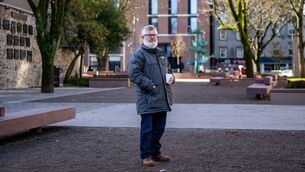Why we’re so fond of these deers
It’s an unmistakeable sound that can be heard several times a minute and can carry for five kilometres in calm conditions.
This is also a good time to go deer watching; a time when visitors come to Killarney National Park and surrounding areas in the hope of getting a close-up look at these majestic animals, believed to be direct descendants of the old native Irish Red deer. The best way to get a look is probably through organised deer walks by groups such as the Kerry Deer Society. Deer are a huge attraction. Killarney Golf Course has a resident herd of 40 to 50.
Stags, now in prime condition, can be targeted by poachers in search of antlers and venison – an old tradition which has not died away, though it is not nearly as extensive as in the past. Wildlife rangers are currently carrying out night patrols in the national park to curb it.
During daytime, deer run away from people and take cover in woodlands, but they are easy targets at night. Poaching was rampant in the late 1970’s and early ‘80’s, a time when deer numbers fell to a critically low level of around 150. In the early 1960’s, the Killarney Red deer were in danger of extinction, so low had the numbers dropped. As a result, legislation which made the deer a protected species was enacted.
Of course, the deer are still protected within the confines of the national park, but permits can be bought to shoot the hinds outside the park. Deer have, for many years, been roaming outside the park boundaries and some have been seen, in recent times, up to 60km away in the Dingle and Caherciveen areas.
There are now around 700 Red and 700 Japanese Sika deer in Killarney, according to Pat Foley, the deputy regional manager of the National Parks and Wildlife Service (NPWS). About 100 of the older and weaker animals are culled each year and, handily enough, the venison is fed to the white-tailed eagles which are being reintroduced in Killarney.
Mature stags are now very strong fighting machines as they seek to ward off rival males and establish their harems on the hillsides, which they try to control exclusively. Looking extremely powerful, the stags break away from male groups and travel alone through the mountains. Their summer walking pace is now a trot and they can cover a huge amount of ground as they canter along the rugged terrain.
As if to stake out ownership of his territory, a dominant stag makes a striking impression when he roars while standing on a rock, or hillock. Lord of all he surveys, his head goes right up with mouth open and the antlers fall below the level of his back. You just stand, admire and listen.
Stags are aggressive and territorial at this time and prepared to fight to the death to fend off rivals. According to wildlife experts, stags cannot be trusted in October, though attacks on humans are rare. Not only are they immensely strong and possessed of sharply-pointed antlers, their inclination to flee is suppressed because of their urgency for hinds and willingness to fight.
While a fight is in progress, a third stag may take advantage and move in, carrying off some of the hinds, but is rarely successful for long as the opportunistic stag will have to fight off powerful opponents to keep his new-found hinds.
Despite the close proximity of Red and Sika deer, which sometimes graze side by side in Killarney, there have been no confirmed cases of interbreeding and the integrity of the Red deer strain remains intact, according to the NPWS.
Sean Ryan’s book, The Wild Red Deer of Killarney, is obligatory reading for anyone seriously interested in these beautiful animals. He closely studied their behaviour in all seasons for more than 30 years. He says that as October draws to close, the vast majority of stags have finished with the rut and are exhausted after their exertions with harems that could include up to 20 hinds.
He writes: “Likewise, the great majority of hinds have mated and as winter is rapidly approaching, it is not unusual to come upon a stag asleep in the open hillside in the late October sunshine.
“It is no surprise, for being a master stag during the rut in Killarney is hard work. The running, roaring, threshing, spraying, wallowing, fighting, mating and lack of food and sleep have all taken their toll. And, in a short four to six weeks, full winter will be upon the mountains.”














